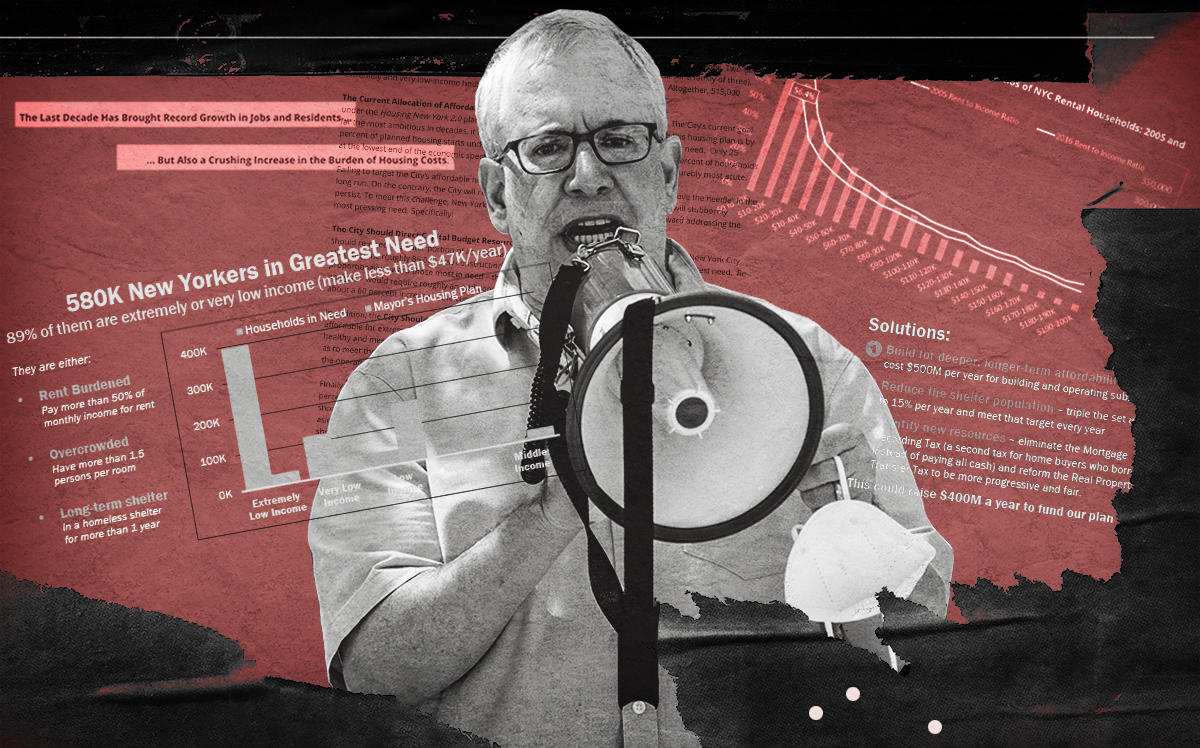Trending
Stringer’s housing plan doesn’t pencil out: developers
Mayoral candidate would require 25% low-rent units in most projects

Mayoral hopeful Scott Stringer wants to require all residential projects to include affordable housing — but some developers say his numbers don’t add up.
The city comptroller released a 47-page housing plan Thursday including details on the “universal affordable housing” program he announced last year. Under it, developers would have to make at least 25 percent of apartments deeply affordable in projects with 10 or more units.
The low-rent units would be affordable to households earning, on average, 60 percent of the area median income — significantly less than in Mayor Bill de Blasio’s housing plan. Developers would get subsidies and tax exemptions to build in neighborhoods where residents earn below 60 percent of AMI.
Stringer also wants to eliminate one of the real estate industry’s favorite tax breaks, Affordable New York, the successor to 421a. He would instead ask the state for subsidies that would be distributed on a discretionary basis to projects that “create large amounts of deeply-affordable housing.”
“No longer will private developers be able to use affordable housing as bargaining chips,” he said during a press conference Thursday. “No longer will communities of color be on the front lines against the city’s housing crisis.”
He would also compel all city-financed affordable housing, both new construction and preservation projects, to set aside at least 15 percent of units for homeless individuals. In late 2019 the City Council established a similar set-aside in city-financed, newly developed buildings with 41 or more apartments.
Stringer’s plan addresses two criticisms of de Blasio’s Mandatory Inclusionary Housing: that it only applies in rezoned areas, which so far have largely been in communities of color; and that its “affordable” units are still too expensive.
But one affordable housing developer said Stringer’s proposal “misses the mark” because it targets tenants already covered by other affordable housing programs, including Low Income Housing Tax Credits.
As a result, he said, those earning less than 30 percent of AMI and those earning between 80 percent and 120 percent of AMI are largely left out. Stringer’s plan shifts more risk onto developers while also stripping away incentives like tax breaks and zoning bonuses.
“You are going to have a lot of private developers pick up and leave,” the developer said.
Lappin Associates’ Michael Lappin, a former CEO of the large nonprofit developer Community Preservation Corp., agreed that a discretionary subsidy program would likely result in smaller developers leaving the city. Those who lack the resources to navigate a more complex system, without guarantees of financing, wouldn’t be able to withstand the risk.
Another developer praised Stringer’s pledge to increase the Department of Housing Preservation and Development’s annual capital funding by roughly $370 million. He said, however, that the plan’s “contradictory concepts” threaten to “undo the good things he is trying to bring to table.”
For example, Stringer would ramp up affordable housing requirements on as-of-right construction projects while cutting off the Affordable New York property tax breaks. The tax break, which expires in 2022 and is controlled by the state legislature, is often cited by developers as essential to offset the costs of multifamily construction in the city.
Stringer would also require prevailing wages for construction workers on city-funded projects “where appropriate.” Developers and contractors say such wages drive up construction costs significantly.
It is unclear if such requirements would be contingent on unions reaching deals similar to agreements between the laborers union Local 79 and affordable housing developer L+M Development Partners. The union agreed to wage cuts in exchange for work on at least four L+M affordable housing projects. The union and a labor umbrella organization, the Building and Construction Trades Council of Greater New York, have endorsed Stringer.
Sam Chandan, dean of NYU’s Schack Institute of Real Estate, speaking generally, said it can be difficult to get projects that are “targeting the most income-constrained populations to pencil out.”
“By design, we are limiting the income potential of those units, so we’re reducing the overall revenue and income of the project,” he said. Affordable rent is defined as no more than 30 percent of household income.
Stringer’s plan acknowledges that his administration would shift from “focusing simply on building the most amount of housing,” but would instead “ensure that all new construction is for those most in need.”




